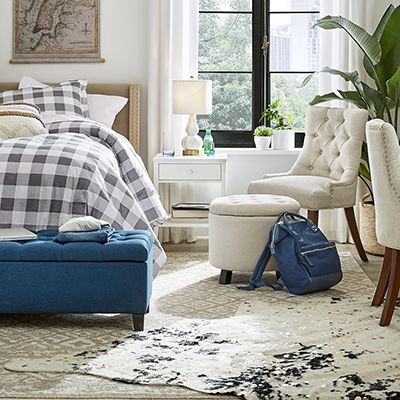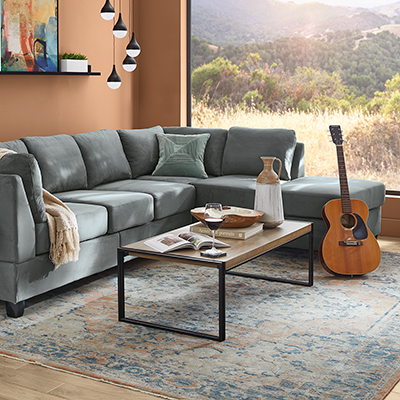The Softest Rugs for Your Home

Last updated September 7, 2023
A rug does more than enhance the look of a room. In addition to size and color, softness can be an important factor. The right one can also make a space more comfortable by cushioning the floor and dampening sound. A few key factors make it easy to find the softest rugs for the nursery, the living room and other rooms in your home where cozy rules and comfort is key. Read on to learn how to select the softest rugs to match your room and please your feet.
Table of Contents
Cotton, Wool & Silk Soft Rugs
Synthetic Soft Rugs
Sheepskin, Cowhide & Faux Fur
Is Handmade or Machine-Made Best for a Soft Rug?
Softest Weave Types
Balancing Softness and Durability
Cotton, Wool & Silk Soft Rugs
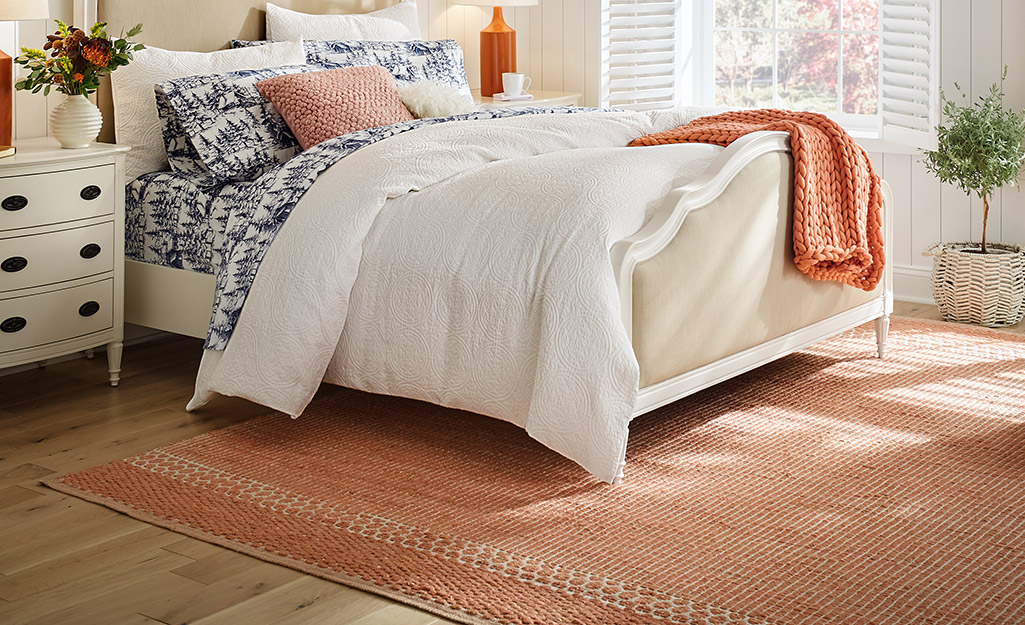
Several natural materials can give rugs a super-soft feel.
- Wool area rugs have strong fibers, insulate well and can clean-up quickly after spills. Made from sheep's wool, they have a pleasant fuzzy texture, which is a common material for high-end floor coverings. Rugs made of wool are strong, making them ideal for busy parts of the home. They’ll also warm up the floor in areas where you like to walk barefoot. Wool rugs are subject to fading in strong sunlight and are not good for high humidity areas.
- Cotton area rugs place soft comfort against your skin. Unlike wool, cotton resists shedding, making cotton rugs easier to care for than wool rugs. Cotton also shows wear more quickly than other fibers. It's mostly available in flat-weave designs.
- Silk gives rugs a sumptuous, smooth texture. It provides an elegant look, is easy to dye and retains a vivid color. Silk-blend area rugs contain viscose or wool for added durability.
A silk-blend area rug is hypoallergenic—a smart choice for family members who have allergies. Like a silk blouse, a floor covering made with silk is delicate and requires special care.
Tip: If you opt for wool, use a rug pad, and vacuum regularly to reduce shedding.
Synthetic Soft Rugs
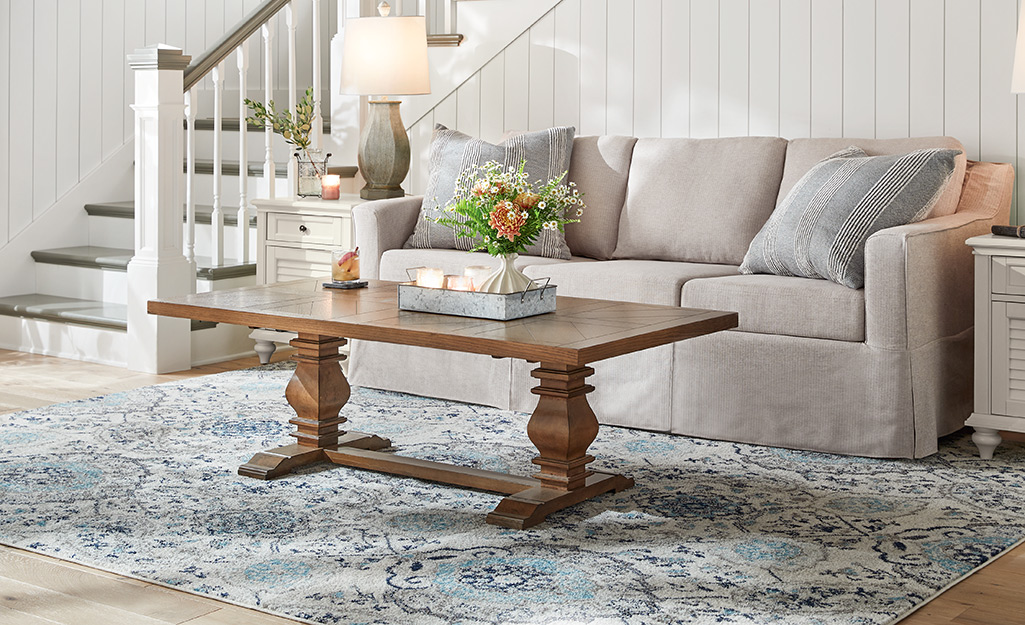
Certain man-made fibers rival the softness of the softest wool, cotton or silk rugs. Plus, synthetic rugs are often more budget-friendly.
- Polypropylene area rugs are made of one of the most commonly used synthetic fibers. It's cost effective and has a texture inspired by the fluffiness of wool.
- Olefin is a synthetic alternative to wool. While it may not last as long as the real thing, Olefin resembles wool’s natural fibers. It has a warm, plush texture. Moisture-resistant Olefin rugs work well in damp indoor and outdoor areas. Olefin is generally made from polypropylene or polyethylene.
- Polyester has a soft, sumptuous texture, but it holds up well in high-traffic areas. Due to their popularity, polyester rugs come in numerous sizes, colors and patterns.
Sheepskin, Cowhide & Faux Fur

For a luxurious soft feel under foot, consider faux fur or real sheepskin rugs. Animal-skin rugs such as cowhide are super-soft and can add a distinctive texture and pattern to your rooms. Faux-fur rugs made of acrylic and other materials offer the same look and feel of the real thing at a more budget friendly price.
Is Handmade or Machine-Made Best for a Soft Rug?
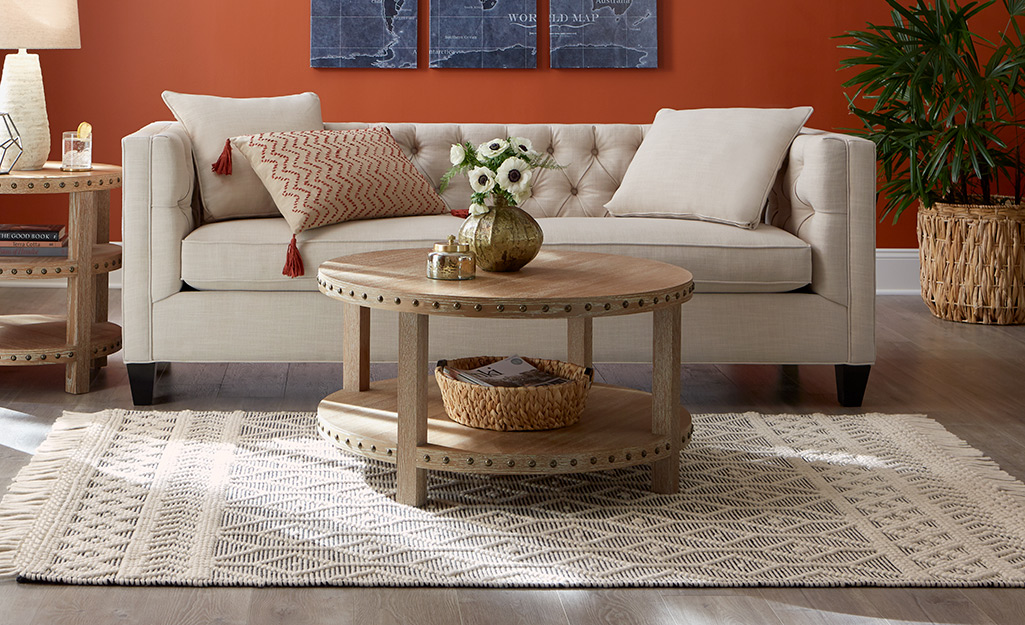
Manufacturers may employ people to handcraft rugs or use machines to produce them. Both handmade and machine-made rugs can be super-soft and comfortable under foot. Generally, machine-made rugs are more budget friendly because they can be mass produced quicker and easier.
Fully handcrafted area rugs have one-of-a-kind character. No two are ever completely identical. The type of handmade rug that’s right for you depends on your budget and style preference. Handcrafted rugs often require more upfront investment.
Softest Weave Types
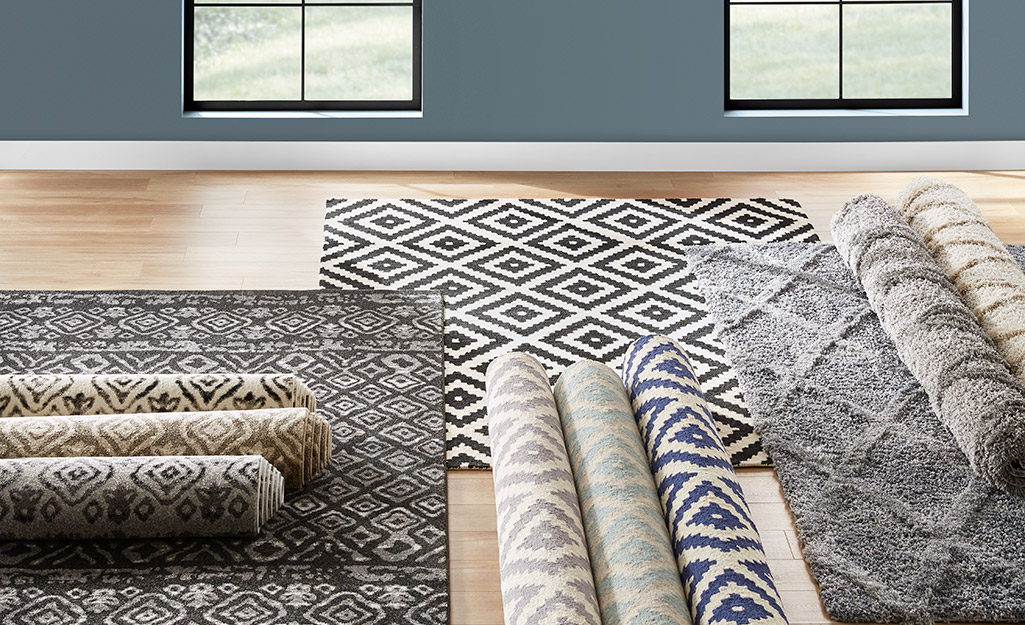
Rugmakers produce handcrafted rugs using various methods. The method used determines the weave type. Braided and flatweave rugs are sturdy options for the busiest parts of a home, but they lack a pile and aren't soft. Two weave types are especially soft:
- Hand-knotted rugs: To make a hand-knotted rug, an artisan uses a loom and ties the fibers by hand. This time-consuming process creates a rug that is soft and flexible but also very strong.
- Hand-tufted rugs: To create a hand-tufted rug an artisan uses a special gun to push yarns through a sturdy backing. The tool makes weaving quicker and more cost effective.
Balancing Softness and Durability
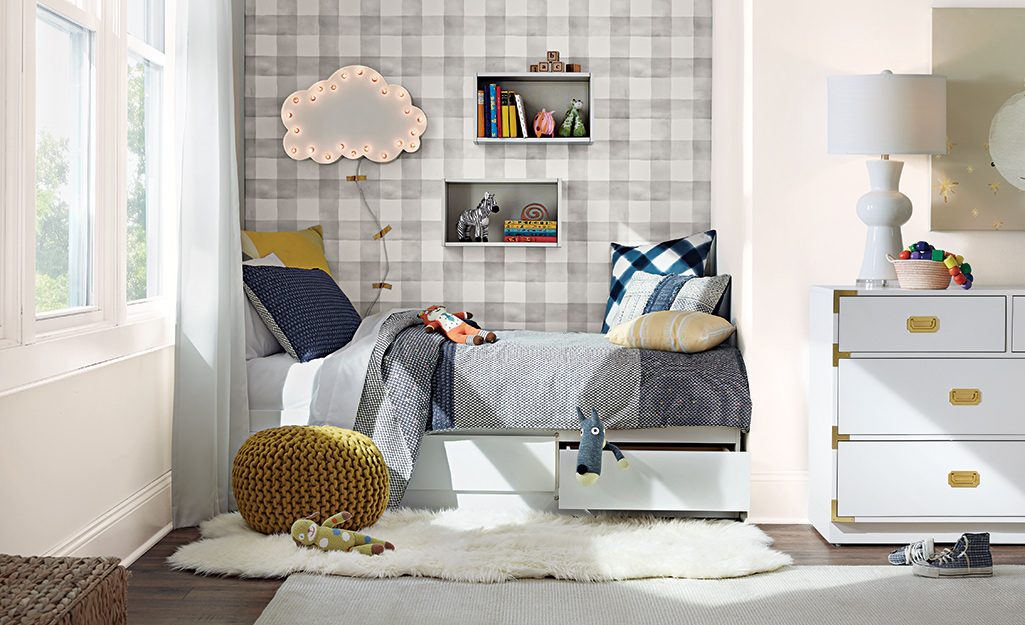
Where are you placing your new rug? If you need a floor covering for a kids room, your main seating area or high traffic area, durability matters as much as softness.
- Wool and synthetic rugs last the longest.
- Lower pile heights are more durable.
- Hand-knotted rugs outlast hand-tufted rugs.
- Machine-made area rugs of any material may be more durable than some handmade options.
Tip: Many rugs come with warranties. Comparing the lengths of warranties can give you an idea of how long manufacturers expect their rugs to last.
Special Soft Rug Features

Special features may make one soft rug better for your room than another:
- Stain-resistant area rugs are great for homes with pets or children. They also work well in areas where you eat and drink, prepare food and walk around with dirty shoes.
- Water-resistant and waterproof area rugs work well in damp areas like bathrooms and basements.
- Antimicrobial area rugs resist mold and bacteria in moist areas and are best for allergy sufferers.
- Fade-resistant area rugs hold onto their color in rooms that get a lot of sun.
- Flame-retardant and heat-resistant area rugs can increase safety around fireplaces and power strips.
Choose a High Pile for Plushness
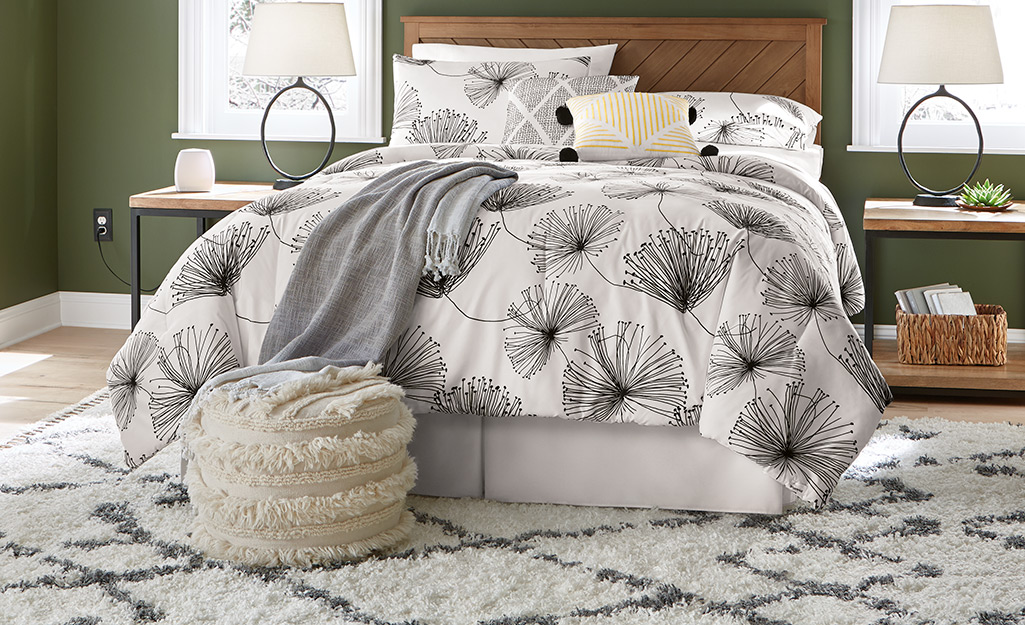
Pile height plays a big role in the softness of a rug. The term pile refers to the thickness of a rug, determined by the length of the fibers. A higher pile indicates a softer, fluffier rug. Any pile over 1/4 inch is considered plush. Long pile rugs of a 1/2 inch or more provide more comfort because the additional yarn adds cushioning. High-pile area rugs are often called shag rugs.
Tip: Higher pile rugs require more maintenance. They work best in low traffic rooms such as guest rooms or bedrooms.
Soft Rug Care Tips

Help your rug maintain its softness and looks.
- Spot clean spills immediately so stains don't have a chance to soak in.
- Some rugs require spot treatments or professional cleaning, while others are machine-washable.
- Real and faux fur area rugs need regular TLC. Run a metal, wide-toothed dog-grooming brush over the pile (fibers) regularly to separate the strands and prevent matting.
- Use the right rug pad to prolong the life of your soft rug.
- Vacuum regularly to remove dirt and refresh the rugs fibers. Use the proper setting on your machine to decrease the wear and tear on the rug.
- Consider having the rug professionally cleaned annually.
Whether you want to warm up your bedroom or create a welcoming foyer for greeting guests,
a soft rug can be the best choice. Soft rugs come in a variety materials and can provide the right finishing touch to your decor. Keep in mind the features that make rugs soft, and narrow down your choices based on your budget, decor and personal taste. Read the care instructions before you buy a rug so that you know ahead of time what you’ll need to do to maintain its softness. Start your search for the softest rugs for your home with the The Home Depot Mobile App to locate products and check inventory. We’ll take you to the exact aisle and bay.





